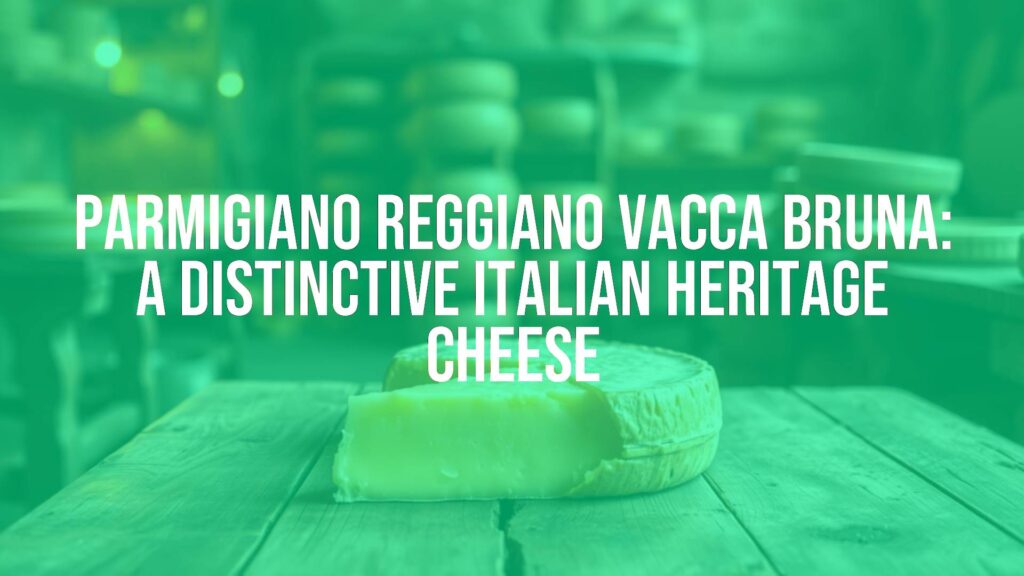Exploring Parmigiano Reggiano Vacca Bruna
Parmigiano Reggiano Vacca Bruna is a rare and celebrated variation of the iconic Parmigiano Reggiano cheese, crafted exclusively from the milk of the Bruna Alpina (Brown Swiss) cattle. Renowned for its exceptional depth of flavor, unique texture, and deep cultural roots, this cheese holds a special place in Italy’s artisan cheese traditions and is increasingly prized by connoisseurs worldwide.
The Uniqueness of Vacca Bruna Milk
The distinguishing characteristic of Parmigiano Reggiano Vacca Bruna lies in its raw material. The Bruna Alpina breed is cherished for milk that is particularly rich in protein and casein, contributing to a finer grain in the finished cheese and a lush, complex taste. This richness leads to a Parmigiano Reggiano with a more buttery, nuanced, and less grainy texture compared to those made from the more common Friesian cow milk.
Historical Significance and Origins
The roots of the Bruna Alpina cattle in Italy trace back to the 19th century when the breed was introduced from the Swiss Alps. These cows adapted well to the northern Italian landscape, especially in the Parmigiano Reggiano production area. Using Vacca Bruna milk for cheese making is not just an exercise in craftsmanship but a continuation of a centuries-old tradition dedicated to savoring terroir and biodiversity.
Cheese Production and Artisan Practices
Parmigiano Reggiano Vacca Bruna is produced under the same strict regulations as standard Parmigiano Reggiano, including the use of raw milk, natural rennet, and traditional copper vats. However, the richness of the Bruna Alpina milk allows for slightly different maturation profiles, often resulting in wheels aged for 24 to 36 months or longer. Throughout the maturation process, affineurs closely monitor the cheese to preserve its elegant balance of flavor and aromatic complexity.
Cultural Relevance and Regional Traditions
In the Emilia-Romagna region, Parmigiano Reggiano Vacca Bruna is considered not just a luxury food but a cultural symbol of biodiversity and artisanal excellence. Local communities value the cheese as a marker of heritage and culinary authenticity, and its revival represents a growing interest in protecting indigenous breeds and traditional methods.
Enjoying Parmigiano Reggiano Vacca Bruna
This cheese is most often savored in the simplest of ways: broken into rustic shards with a special almond-shaped knife and enjoyed alone or with a drizzle of aged balsamic vinegar. Its layered flavors also make it an ideal companion for fresh pears, dried fruits, and robust regional wines like Lambrusco or Sangiovese. Grated or shaved, it can add depth to risottos or fresh pasta, but the remarkable nuance of Parmigiano Reggiano Vacca Bruna truly shines when it is eaten on its own as part of an antipasto or a cheese tasting plate.
Serving and Storage Tips
For the fullest sensory experience, bring the cheese to room temperature before serving to release its complex aromas. Store Parmigiano Reggiano Vacca Bruna, wrapped in waxed paper or clean cotton cloth, in the refrigerator to maintain freshness while allowing it to breathe.
In Summary
Parmigiano Reggiano Vacca Bruna is much more than a cheese; it is the culmination of a regional legacy, eco-conscious farming, and the pursuit of exquisite taste. Appreciating this artisanal product is a journey into Italy’s rich landscape and enduring gastronomic traditions.

